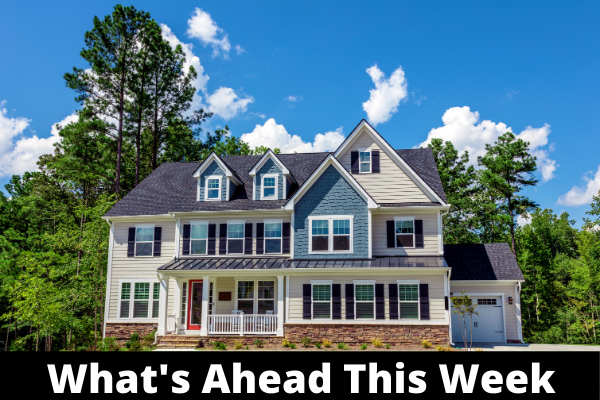What’s Ahead For Mortgage Rates This Week – September 6, 2022
 Last week’s economic reporting included readings on home price growth, federal data on public and private sector job growth, the national unemployment rate, and data on consumer sentiment. Weekly readings on mortgage rates and jobless claims were also released.
Last week’s economic reporting included readings on home price growth, federal data on public and private sector job growth, the national unemployment rate, and data on consumer sentiment. Weekly readings on mortgage rates and jobless claims were also released.
S&P Case Shiller: Home Price Growth Slows in June
The S&P Case-Shiller National Home Price Index reported slower home price growth in June as home price growth slowed to a year-over-year pace of 18.0 percent as compared to May’s reading of 19.9 percent. The 20-City Home Price Index posted 18.6 percent growth in June as compared to May’s reading of 20.50 percent year-over-year growth in May.
The top three cities in June’s 20-City Home Price Index were Tampa, Florida, which posted the fastest year-over-year home price growth rate for the fourth consecutive month with a reading of 35.00 percent, and Miami. Florida with a year-over-year home price growth rate of 33.00 percent. Dallas, Texas completed the top three cities with year-over-year home price growth of 28.20 percent.
While all 20 cities reported double-digit percentages for year-over-year home price growth, 19 of 20 cities reported slower rates of home price appreciation in June. Craig J. Lazzara, Managing Director of S&P Dow Jones Indices, explained the difference between the deceleration of home price growth and home price decline. A deceleration in home price growth indicates that while home prices continue to increase, they’re doing so at a slower pace. A decline in home prices means that home prices are falling.
Analysts expect rising mortgage rates to negatively impact home sales as affordability issues increase. As demand for homes falls, home prices may also fall as the housing market cools.
Mortgage Rates Rise, Jobless Claims Fall
Freddie Mac reported higher average mortgage rates last week as rates for 30-year fixed-rate mortgages rose by 11 basis points to 5.66 percent. Rates for 15-year fixed-rate mortgages averaged 4.98 percent and 13 basis points higher. Rates for 5/1 adjustable rate mortgages averaged 4.51 percent and 15 basis points higher than in the previous week.
Initial jobless claims fell last week with 232,000 initial claims filed as compared to the previous week’s reading of 237,000 first-time claims filed. Analysts expected 245,000 new jobless claim filings last week. Job growth reports from ADP and the government’s Non-Farm Payrolls report showed sharp drops in job growth; ADP, which reports on private-sector payrolls, reported 132,000 jobs added in August as compared to July’s reading of 268,000 private-sector jobs added in July. The Non-Farm Payrolls report
The national unemployment report rose to 3.70 percent in August from July’s reading of 3.50 percent. Analysts expected a reading of 3.50 percent unemployment for August.
What’s Ahead
This week’s scheduled economic reporting is spare due to the Labor Day Holiday. Fed Chair Jerome Powell will give a speech and weekly readings on mortgage rates and jobless claims will be released.


 Last week’s economic reporting included readings on home builder confidence in housing market conditions, Commerce Department readings on building permits issued, and housing starts along with readings on retail sales. Weekly readings on mortgage rates and jobless claims were also published.
Last week’s economic reporting included readings on home builder confidence in housing market conditions, Commerce Department readings on building permits issued, and housing starts along with readings on retail sales. Weekly readings on mortgage rates and jobless claims were also published.